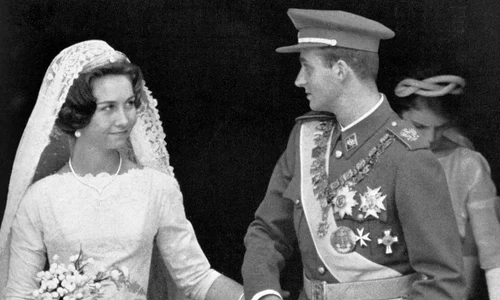
Is Gender a Real Thing?
Boys are boys and girls are girls. We keep hearing that ever since we are born. But really, what does that mean? Apart from the physical characteristics, that is. Are there really some nature-given categories we define as gender or have we rather constructed them as part of our attempts to organize societies and cultures? Well, we pretty much tend to construct everything.
Gender is a lot messier than we tend to think, than boys playing with cars and girls making tea parties. Gender, as proposed by scholar Judith Butler, is more like a set of scripts that society expects from us to act upon. Women and men dress in particular ways, have different activities or think according to their gender-specific brain patterns (and by the way, male and female brains have very few structural differences, according to recent studies). Women are expected to be kind, emotional, sensitive, nurturing;men are expected to be…manly of course, strong, practical, down-to-earth, impervious to “girly” stuff anyhow.
Norms however are never static, but dependent upon societies and how these evolve. Men used to wear pointy shoes in the Middle Ages. It was acceptable for women to have body hair until a couple of decades ago. Such examples abound throughout history and show that manhood and womanhood are all in all imagined and regulated by means of laws, moral codes or ideals expressed in myths and stories. In the present day there is a growing tendency to counter stereotypes, the so-called hegemonic concepts like patriarchy, yet media discourses and institutional practices can still remain pretty traditional.
Gender roles such as the father as breadwinner and the mother as homemaker are socially perfected. From the very moment declare us as boys or girls, we are expected to behave in a certain manner, to fancy that which society thinks fits us. Gender is an apparently coherent narrative we attach to anatomy and there are lots of us who don’t really fit into either category. Our ideal images about the masculine and feminine are merely fictions constantly breaking down and fragmenting. There are women who fancy weapons or sports and there are men who’d rather indulge in fashion and art. Judith Butler suggests interpreting these identity choices as performative acts. We act out gender every day through speech, habits, thoughts and therefore putting on a show that when repeated consolidates our approaches to gender.
We shouldn’t consider gender just in terms of an identity we put forward, but also a kind of ritual that helps us either follow dominant codes of expectation or break them and choose other ones, so to speak counter-cultural ones like transgender or homosexuality. Or simply adhere to subversive lifestyle (e.g. being a woman biologically doesn’t automatically imply finding accomplishment in a relationship that results in offspring). What is a “real” woman anyway? No such thing. Gender is fluid and is determined by cultural variation as much as by personal acts. Societies tend to enforce homogenous identities and exclude those which do not fit into the binary of man and woman. We act and speak and walk in a certain manner that consolidate the impression of being a man of a woman. But these are not internal facts about us, but we actually produce this gender through behavior.
Might sound controversial, yet what is “normal” is the result of societal agreements trying to keep us into place. That can be noticed for instance when tomboys or “sissy” boys are bullied at school or when parents ask for psychological help. In other words, not conforming is regarded as disruptive. Sex might be fixed, gender is culturally and subjectively determined. You can manifest gender through name, clothing, haircut, voice, body etc. and need not fit into the binary. In this complex situation of gender grey-zones what we can all do is be respectful regardless of the gender option which is essentially a cultural and identity-building element, in spite of how much our brains like categorizing.















